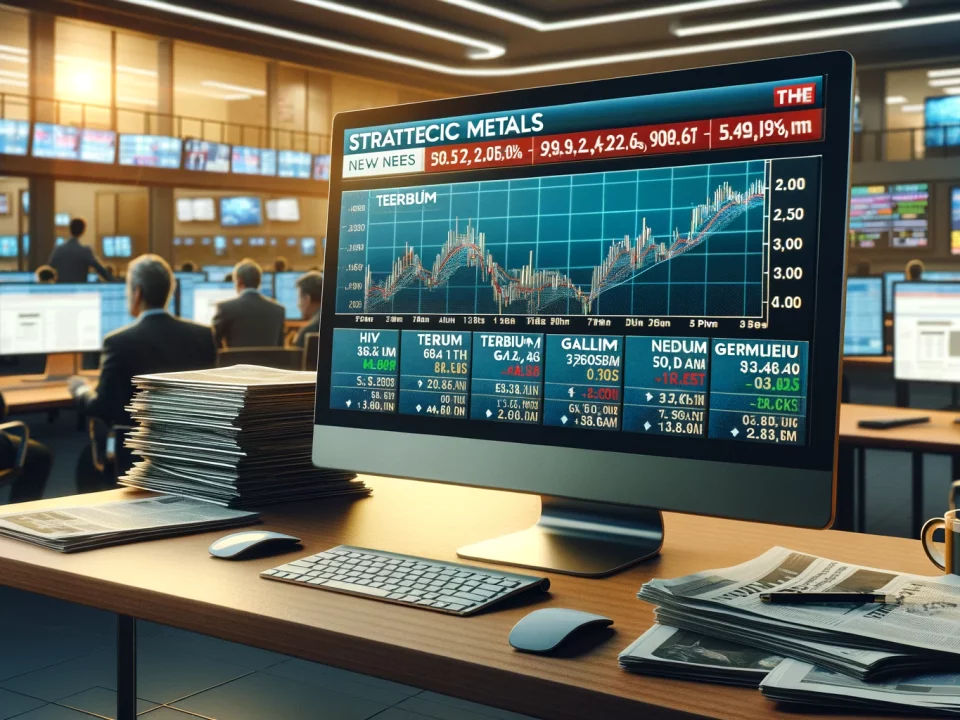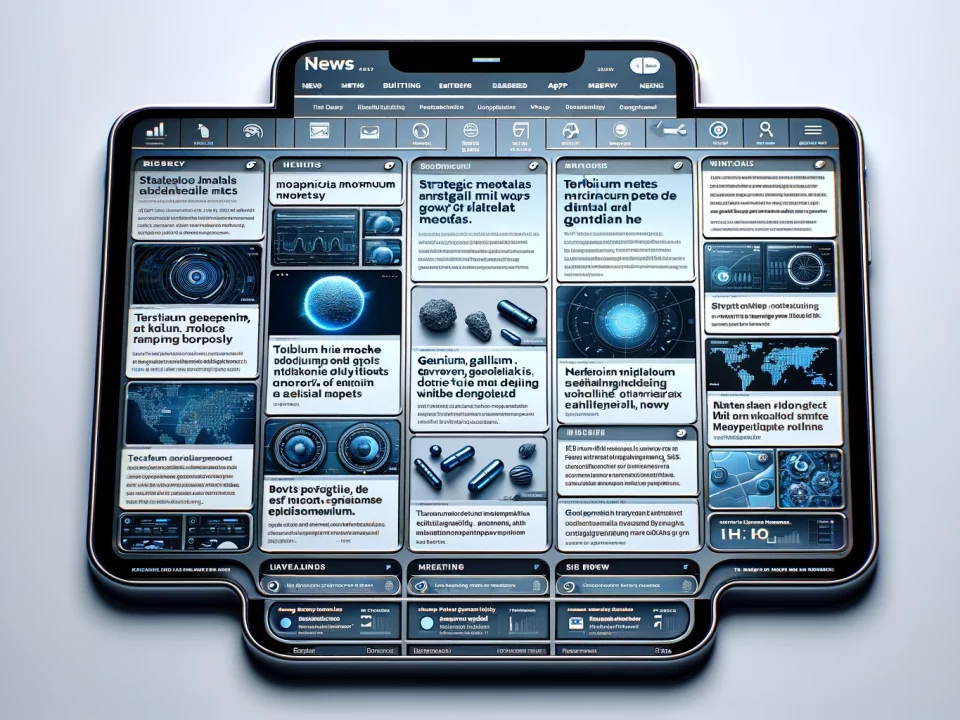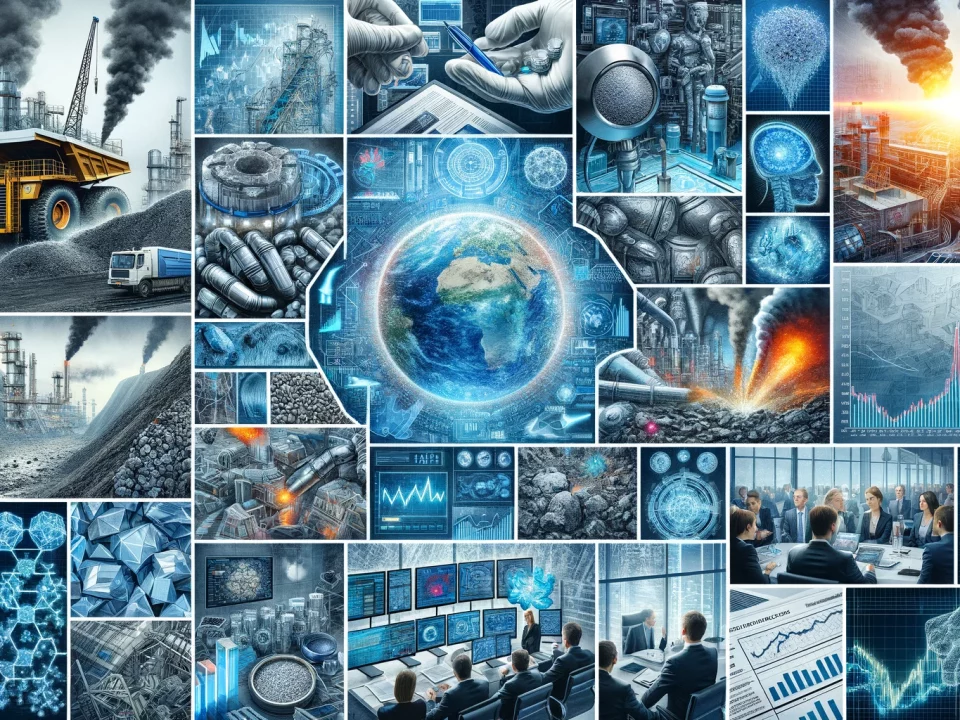
Weekly News Review June 23 – June 29 2025
June 29, 2025
Weekly News Review June 30 – July 6 2025
July 6, 2025As the world pivots from oil to metals, from globalization to deglobalization, and, in turn, the rise of economic nationalism, strategic metals have become the frontline in geopolitical decisions.
Ahead of the Critical Materials Forum in Berlin, hosted by market intelligence firm Project Blue in association with the Federation of German Industries (BDI), we sat down with Jessica Fung for insights into the evolving critical mineral markets. Jessica, head of consulting at Project Blue, sheds light on key developments in critical minerals within the context of geopolitical developments and a global surge in defense spending.
Thank you for taking the time. Let us dive directly into the topic: Which defense technologies or systems currently generate the highest demand for critical materials such as rare earths, PGMs, and minor metals?
Critical materials are used across all defense technologies, equipment, and systems. They are used in varying ways depending on their properties. However, it is essential to note that the demand for critical materials from defense applications is increasing rapidly due to strategic shifts in modern conflict situations, where aerial systems, particularly unmanned technologies such as missiles, drones, and anti-airborne weapon technology, have become more prevalent.
Rare earths are primarily used in motors for flight functions, such as those found in jets or drones. However, they are also used in a wide range of sensor technology, lenses, LED displays, and laser guidance systems. Even lithium-ion batteries are exposed to military applications through their use in powering drones. PGMs are notable because they are used for both their physical and communications/electronic properties.
Ruthenium is an exciting element used for its heat-resistant properties, which are becoming increasingly important in defense equipment, particularly in electronics and aerodynamic drag management. Additionally, it is used as a coating to reduce radar cross-section by scattering or absorbing electromagnetic waves. Finally, all things semiconductor-related are also key, not only the materials contained in them but also the materials required in the manufacturing process.
Speaking more broadly, in what ways has the rise of economic nationalism and the trend toward deglobalization reshaped defense supply chain strategies, particularly regarding critical materials sourcing and security? Moreover, how exposed is the West to critical material supply disruptions?
It has only been in the last four years, since the Russia-Ukraine conflict, that the trend toward deglobalization has significantly impacted defense strategy regarding critical material supply chains. Previously, the focus had centered mainly on the energy transition. China’s export restrictions since 2023 (to varying degrees) for critical materials such as gallium, germanium, antimony, rare earths, tungsten, graphite, molybdenum, bismuth, indium, and tellurium also added fuel to the fire.
Since 2022, we have seen defense spending increase in earnest; however, to date, the geographical sourcing of defense equipment and technology has largely remained the same, primarily because it takes many years to build up manufacturing capabilities and establish supply chains for this highly sensitive sector. The critical materials supply chain, however, has had to face some adjustments.
Titanium is a notable case study. Russia had previously been the world’s largest supplier of aerospace-grade titanium. As more countries announced sanctions against Russian materials, and many companies also chose to self-sanction against buying Russian materials, particularly for defense applications, prices increased. There was a struggle to secure sufficient titanium. The criticality of the supply chain was also quickly highlighted by the exemption of Airbus and Boeing from sanctions.
However, our conversations at this year’s Paris Air Show with parts manufacturers and distributors suggest that this challenge has primarily been addressed as additional producers have entered the market. Nevertheless, for highly stringent aerospace applications, the certification process for new materials and supply chains can take up to 10 years before the material is introduced into an active passenger aircraft.
Trade data confirm that Kazakhstan and Saudi Arabia became more prominent in the sponge export market in 2024, alongside Japan, which has long been a leading supplier. The USA dominated titanium metal exports earlier this year. The trade data also indicate that South Korea is becoming increasingly prominent as an importer, which signals shifting flows and ambitions in the aerospace and defense industry.
There are probably two key takeaways from the titanium market:
- Supply disruptions are typically resolved over time. Supply constraints are very rarely a structural, permanent change in the market. The quickest response will likely be expansions from existing producers, but emerging players can also enter the market after two to three years.
- Despite policymakers’ desire to build domestic capacity, the reality is that critical materials and defense will always be a global business, particularly as one moves further along the value chain. Upstream is all about geology, midstream requires energy and logistics, and downstream is about technology and efficiency. No one country can do all of it for every critical material or defense application. So partnerships and cooperation remain key to securing critical materials.
As global supply chains realign, which countries or regions are positioning themselves as potential alternative sources or processors of critical materials for defense use?
At the latest G7 meeting in mid-June 2025, the countries endorsed the development of critical minerals supply chains, with a particular emphasis on collaboration between development financial institutions (DFIs) and export credit agencies (ECAs) to support this strategy. However, the press release also acknowledged the need for additional collaboration beyond this small group of nations, including Australia, India, South Korea, and Africa.
The key to the question, of course, is permitting and processing.
Global resources and reserves are well mapped, and many projects have been known about for decades. However, regulatory hurdles, such as permitting, which are driven by government policy, have long been a significant impediment to financing these projects. Of course, our natural resources should be extracted and processed responsibly and sustainably, which adds complexity for policymakers as the geology, flowsheets, and logistics differ from project to project. There is no one-size-fits-all policy that works for all projects, but this does slow down the development timeline.
The second part of the puzzle involves processing raw materials into advanced or alloyed materials suitable for use in technological and defense applications, where capacity also needs to be expanded to meet future needs. There are a minimal number of manufacturers that have the experience and approvals to supply defense chains today. However, we are hearing from producers in other areas of the world, such as Central Asia and South America, who want to enter this supply chain, particularly those who may already produce commodity- or industrial-grade materials and are looking to upgrade their capabilities.
How can Project Blue help policymakers and industry stakeholders navigate the critical materials markets amid the geopolitical turbulences?
Project Blue’s team covers over 30 critical material markets, as well as key strategic industries such as aerospace and defense, semiconductors, lithium-ion batteries, steel and alloys, and renewables. Through this breadth of coverage, as well as our senior team with over 150 years of collective experience in commodity markets, we can support policymakers in three ways:
- We can assess the impact of supply disruptions or evaluate potential new supply routes. We map the supply chain for all our critical materials under coverage. We regularly update our database of upstream and midstream operations, build asset-by-asset cost models, track trade data, and understand the flowsheet from end-use applications.
- We offer unique insights by leveraging our cross-commodity knowledge and experience. Each critical material market is unique, but there are also lessons to be learned from other industries, price cycles, and policy actions that may be relevant or at least suggest areas of risk and opportunity to consider.
- We bring people together at our forums and conferences around the world not only to share our insights but also to network with one another and exchange ideas. We continually update the content to ensure it remains current and forward-looking, with a focus on delivering high-quality insights.
Together, we help our clients make informed decisions, navigate change, and stay ahead of market developments as opportunities emerge.
Looking at the venue, what can attendees expect from the Critical Materials Forum, and why was Berlin chosen as the host city?
European countries, including Germany, are upping defense spending amid geopolitically volatile relations and ongoing conflicts.
The Berlin Critical Materials Forum will be Project Blue’s 5th for 2025 and the first in Europe before returning in October for the LME week. Together with local industries, including semiconductor manufacturer Infineon, we will discuss a broad range of critical materials relevant to advanced technologies, EVs and batteries, aerospace, and the military.
SOURCES: Tradium Gmbh and Jessica Fung – ( seasoned senior finance professional with over 17 years of experience, specializing in commodities market research and investment strategy.)






